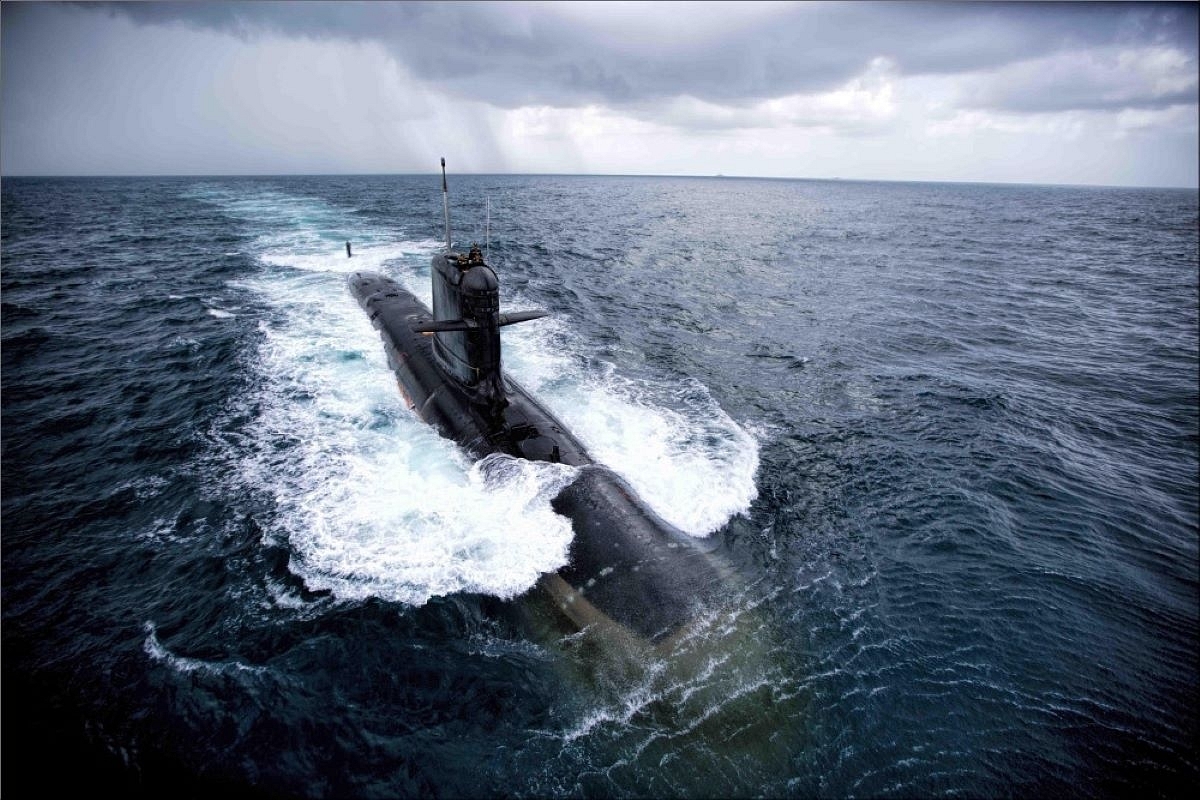Defence
Explained: Why India Is Equipping It's Newest Submarines With Indigenous Air Independent Propulsion System

Scorpene class submarine INS Kalvari to be retrofitted with the new DRDO-built AIP system as it goes for its first refit.
INS Kalvari, the first Scorpene-class submarine built for the Indian Navy, will be fitted with an indigenous Air Independent Propulsion (AIP) system developed by the Defence Research and Development Organisation (DRDO), the Ministry of Defence (MoD) said in a statement.
The Scorpene class submarines are being built by Mazagaon Docks Limited under a $3 billion Transfer of Technology (ToT) agreement between MDL and the French Naval Group, which was signed in 2005.
These submarines have the traditional diesel-electric propulsion systems.
All these six submarines will be retrofitted with the new DRDO-built AIP system as they go for their first refits, starting with INS Kalvari in the next few years.
Additionally, there are reports that India might buy an additional three submarines of the class, which might come equipped with the same DRDO AIP from the get go.
Why India Needs AIP Submarines
An AIP system gives a submarine the ability to remain submerged underwater, away from enemy sensors, for a long time without surfacing.
DRDO says that AIP has a “force multiplier effect on the lethality of a diesel-electric submarine, as it enhances the submerged endurance of the boat multi-fold.”
A diesel-electric submarine without AIP, on the other hand, has to come just below the surface of the water frequently to recharge its batteries — which power its propellers and other equipment.
This process is called “snorkelling”. Snorkelling involves coming just below the surface of the water, with the submarine’s periscope and generator exhaust pipe above the surface.
These periscope and generator exhaust pipes could easily be detected by radars like Telephonics AN/APS-153(V), which MH-60R helicopters, Indian Navy’s latest helicopters, bought from the United States, come equipped with.
The AIP, however, reduces the need for snorkelling by enabling it to generate electricity for charging its batteries, while completely submerged.
Most common AIP systems installed on submarines use liquid or compressed oxygen or hydrogen fuel cells, to reduce the need for external sources.
DRDO’s AIP System
DRDO’s AIP is based on Phosphoric Acid Fuel Cell or PAFC technology, which offers relatively long life and more efficiency, which makes it cost-effective.
It is being developed by DRDO’s Naval Materials Research Laboratory at Ambernath in Maharashtra, with support from Larsen and Toubro and Thermax.
DRDO, just yesterday (23 January), signed an agreement with the French Naval Group to retrofit this PAFC-based AIP system on all the Scorpene-class submarines. If successful, future conventional submarines built in India will be equipped with the DRDO-built AIP or a version of it.
Pakistan To Get Eight AIP Equipped Submarines
Pakistan and China are operating AIP-equipped submarines for quite a while. Pakistan already operates three AIP-equipped Agosta-90B submarines since the 2000s.
Pakistan bought these submarines from the French. The Pakistanis are also getting eight Chinese-built Yuan class AIP-equipped submarines.
As a result, Indian Navy’s Scorpene class submarines equipped with DRDO’s AIP becomes significant.
Introducing ElectionsHQ + 50 Ground Reports Project
The 2024 elections might seem easy to guess, but there are some important questions that shouldn't be missed.
Do freebies still sway voters? Do people prioritise infrastructure when voting? How will Punjab vote?
The answers to these questions provide great insights into where we, as a country, are headed in the years to come.
Swarajya is starting a project with an aim to do 50 solid ground stories and a smart commentary service on WhatsApp, a one-of-a-kind. We'd love your support during this election season.
Click below to contribute.
Latest